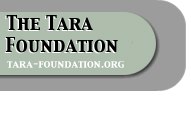

 |
 |
        |
Read the Act here (scrawl down and download .pdf). In a case taken to the Supreme Court by campaigners who were trying to prevent the demolition of part of a medieval castle at Carrickmines by the National Roads Authority, to facilitate the completion of the M50 Motorway, the Court found that the castle was a protected structure under the Act, and that to proceed with the demolition would be illegal. Confident that nothing could prevent the completion of the road, the NRA had continued work on it despite a series of ongoing court battles, leaving a gap where the castle site was located. But the Supreme Court ruling was a serious setback, and not just for the M50, because it threatened the future of the entire road-building scheme. The Department of the Environment, Heritage and Local Government has the responsibility for heritage matters under the present Government. The Minister, Martin Cullen, decided to clear the way for the completion of the M50, and to prevent any further court challenges based on heritage considerations, by introducing the National Monuments Act 2004. This Act did two things: 1) It abolished the Government body Duchas, which was established to implement guidelines that had been set out in the 1994 amendment to the Act. These guidelines imposed rigorous standards for any individual or group seeking permission to survey an archaeological site. For instance, a method statement had to be submitted, indicating the reasons for the survey and the technical means to be used. A license was issued by Duchas and signed by the Minister on condition that this method statement was adhered to. A report had to be submitted to Duchas after the survey, compiled by an archaeologist and verified by an archaeological consultant, which confirmed that the most non-invasive means possible had been used and the site had not suffered damage. With the abolition of Duchas, this system of licensing ended, and the guidelines, compiled in line with UNESCO directives, ceased to have effect. 2) The Minister granted himself power to order the damaging, sale, or destruction of any monument, artefact, or archaeological site in the State, if the Minister judged it to be "in the national interest". This fact marks out the 2004 Act as one of the most momentous legislative acts in the history of the Republic, and one whose implications are as clear as they are appalling. With a stroke, the Minister did away with a major function of his own office, the safeguarding of national heritage, and put in its place a provision whereby he may decide, without any kind of legal restraint, to order the levelling of Newgrange, the Rock of Cashel, Glendalough, or the Hill of Tara itself should a developer submit a request for permission to do so, and should the Minister decide it to be "in the national interest". Article 34.4.6 of the Irish Constitution states that the decision of the Supreme Court shall in all cases be final and conclusive. By granting that Carrickmines Castle was a protected structure under the National Monuments Legislation 1930-1994, the Supreme Court both granted protection to any other national monument or heritage site, and copperfastened the Legisation itself. In doing away with the Legislation, by doing away with the protections it was the whole purpose of the Legislation to establish, the Minister demonstrated contempt for the highest court in the land as well as for the Constitution, denying that either was binding on Government. In other words, the National Monuments Act as it now stands is not legally binding, and any action the Minister orders or grants with reference to it, criminally culpable. The Government and the NRA are well aware of this problem. Though the Minister can no longer grant licenses under the 2004 Act, because the conditions under which licenses were granted no longer exist, and there is no Government agency to implement the conditions of a license, he still pretends to be able to do so. In the case of the M3, over 80 licenses have been granted to Archaeological Consultancy Services Ltd. and Irish Archaeological Consultancy Ltd., to excavate in the Tara-Skryne Valley. This excavation, referred to as "test trenching", involves digging a series of trenches on a suspected archaeological site using heavy machinery, checking with the naked eye for signs of artefacts or structures, documenting the structures or retrieving the artefacts, and then filling in the trenches so that the site may be destroyed by the road builders. This method is standard practice for the archaeological firms employed by the NRA. It is also a travesty of correct archaeological procedure, where heavy machinery is used rarely, if at all, and a wide range of non-invasive tests are carried out, core samples are taken to show the layering of the site, and a layer-by-layer excavation is performed by hand. But since there is no legislation requiring that correct archaeological procedures are performed, sites can be damaged and destroyed with impunity. This is the purpose of the pretence: by issuing licenses as if the old National Monuments Legislation were still in effect, the Minister, and through him the NRA, can give the public appearance of care for heritage and archaeological thoroughness, while in reality destroying heritage without risking accusations that they are breaking the law, because there is no law to break. The only problem is that the law they are relying on to give this appearance does not exist, and the law they are using to legitimize their actions has no Constitutional status. © The Tara Foundation, 2004 The Tara Foundation The Tara Foundation The Tara Foundation The Tara Foundation The Tara Foundation The Tara Foundation The Tara Foundation The Tara Foundation |